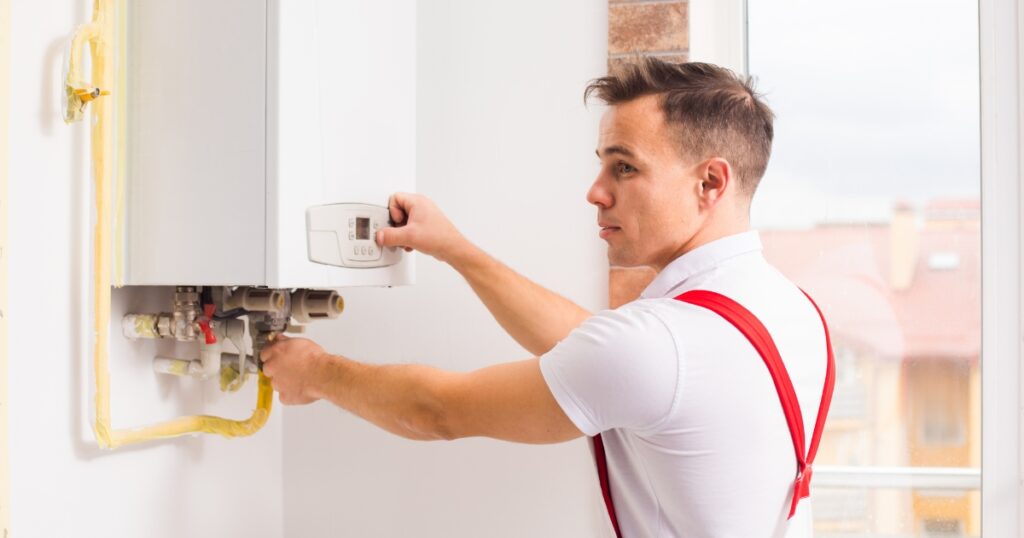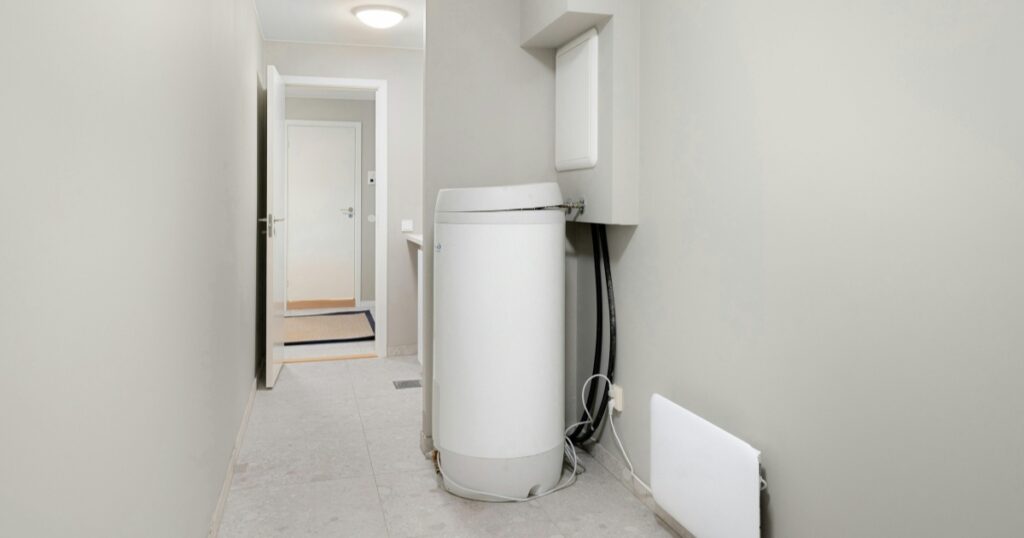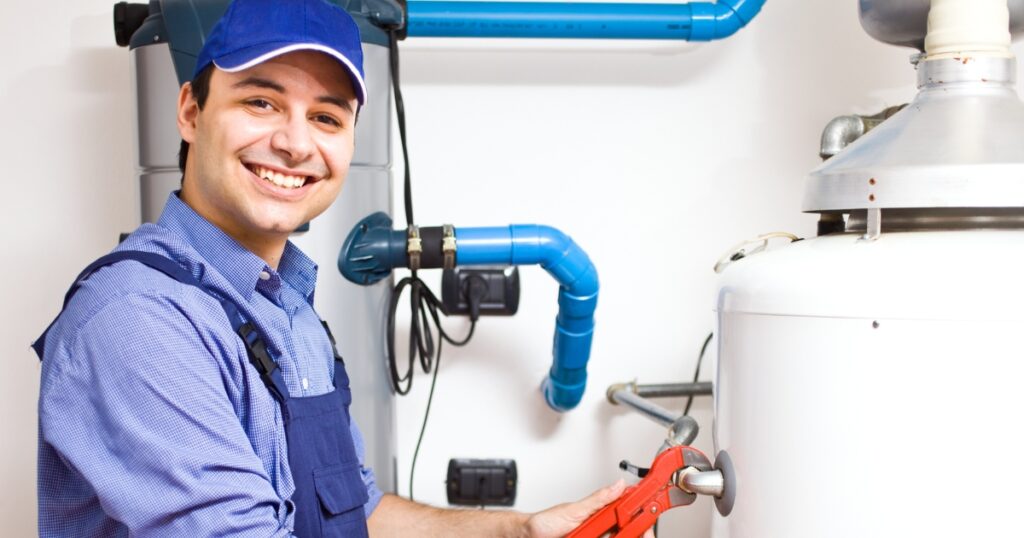Finding your hot water service expansion valve on the blink can be a proper nuisance, eh? We totally get how much of a bother it is. That’s why we’ve put in the hard yards to pull together all the info you’ll need to sort out those dodgy valves, whether that means giving them a fix-up or chucking them out for new ones.
Key Takeaways
- Hot water service expansion valves control the pressure in your plumbing system, preventing bursts from thermal expansion. Regular checks and replacements are vital for a leak-free hot water supply.
- If you find a leaking valve, it’s important to identify the source fast. You might see water pooling or notice dampness around pipes and connections. Calling a licensed plumber can get this sorted out efficiently.
- Deciding whether to fix or chuck out a faulty valve depends on how severe the problem is. Sometimes, replacing a worn-out valve or upgrading parts like thermostats can save money in the long run.
- Keeping your hot water system’s valves in top shape involves checking for corrosion, flushing out sediment, and making sure all installations are done correctly. Scheduled professional maintenance every few years helps too.
- Simple repairs like swapping old components or installing new tech like Corro-Protec anodes can extend your system’s life and improve its performance, ensuring you’ve always got hot water when you need it.
What are Hot Water Service Expansion Valves?
Hot water service expansion valves play a crucial role in our home’s plumbing system. They help manage the pressure within the hot water system by relieving excess pressure caused by thermal expansion.
As water heats, it expands. Without these valves, the increased volume could cause pipes or the water heater itself to burst, leading to extensive damage.

These valves come in various types, including pressure relief valves and thermal expansion relief valves. Innovations like SharkBite’s Thermal Expansion Relief Valve are designed to eliminate the need for an expansion tank altogether.
For homeowners interested in maintaining their hot water systems efficiently, understanding how these components work and when they require attention is key. Regular checks and replacements of these valves ensure a continuous supply of hot water without interruptions or leaks from worn-out parts.
Causes of Hot Water Service Expansion Valve Issues
Hot water service expansion valve issues can stem from various sources, including a damaged tank and pressure relief valve. Loose or leaking pipe joints also contribute to the malfunctioning of hot water service expansion valves.
Damaged Tank
Damaged tanks can lead to leaks and cause issues with hot water service expansion valves. Corrosion or physical damage to the tank can result in water escaping, affecting the proper functioning of the expansion valve.
A damaged tank can also put a strain on other components, leading to further malfunctions within the hot water system. Regular maintenance and inspection of the tank’s condition are essential for preventing such problems.
When a tank is damaged, it’s crucial to seek professional help immediately. Ignoring a damaged tank can lead to more severe issues down the line, potentially resulting in costly repairs or even requiring a complete replacement of the hot water system.
Pressure Relief Valve
The pressure relief valve is a critical component of your hot water system that helps to regulate the internal pressure. Over time, these valves can wear out or malfunction, leading to symptoms such as dripping or leaking.
It’s essential to have a licensed plumber inspect and replace any faulty pressure relief valves promptly to ensure the safety and efficiency of your hot water system. Additionally, proper installation of a thermal expansion relief valve can help create an uninterrupted hot water experience while resolving issues with overpressure in the system.
Regular maintenance and periodic replacement as recommended by the manufacturer are crucial for ensuring that the pressure relief valve continues to function properly. By addressing any issues with the pressure relief valve early on, you can avoid potential damage to your hot water system and maintain consistent performance.
Loose/Leaking Pipe Joints
Leaking hot water valves can be caused by loose or damaged pipe joints. It is important to inspect the joints regularly for signs of leakage, such as water puddles or dampness around the connections.
When addressing leaking pipe joints, it is essential to seek professional plumbing repair services to properly identify and address the issue. By turning off the water main and taking proactive measures, homeowners can prevent further damage and ensure a continuous supply of hot water in their homes.
Worn-out components or faulty thermostats are common culprits for loose or leaking pipe joints that may lead to potential leaks in hot water service expansion valves. Seeking professional help from licensed plumbers is vital in detecting and resolving issues related to leaky pipe joints before they escalate into larger problems requiring costly repairs.
How to Detect and Address Leaks from Hot Water Service Expansion Valves
If you notice water pooling around the hot water unit, inspect the expansion valve for any leakage and seek professional help to address the issue. For more tips on troubleshooting and maintaining your hot water system expansion valves, keep reading!

Identifying the source of the leak
To identify the source of the leak, inspect the hot water service expansion valve and surrounding connections for signs of water. Look for any dripping or moisture around the valve, relief pipe, or tank. Check for water pooling on the floor beneath the valve as this could indicate a leak. Examine the pressure relief valve to see if it is releasing water when it shouldn’t be. Be sure to also inspect all visible pipes and joints for any signs of dripping or dampness. If you suspect a leak, contact a licensed plumber to assess and address the issue promptly.
If you notice any unusual water discharge from your hot water system expansion valves, it’s crucial to take proactive action and investigate further to avoid potential damage and costly repairs down the track.
Seeking professional help
At times, it’s best to contact a licensed plumber to address hot water service expansion valve issues. Professional plumbers have the expertise and tools needed to accurately diagnose the problem and recommend the most suitable solution.
They can efficiently repair or replace faulty valves, ensuring your hot water system is functioning optimally. When dealing with complex plumbing issues such as hot water system expansion valve leaks or faulty tempering valves, seeking professional help can save time and prevent further damage to your system.
Contacting a licensed plumber when experiencing issues with hot water service expansion valves ensures that the problem is effectively addressed by a skilled professional. A qualified plumber will assess the situation thoroughly, providing expert guidance on whether repair or replacement is necessary based on their assessment of the fault.
Taking proactive measures
We recommend taking proactive measures to maintain your hot water service expansion valves and prevent potential issues. Here are some steps you can take:
- Regularly inspect the valves for any signs of leaks or wear, especially if you notice fluctuations in water temperature.
- Schedule professional maintenance to ensure all components are in good condition, reducing the risk of unexpected failures.
- Consider installing a Thermal Expansion Relief Valve or powered anode as preventive measures against frequent repairs or replacements.
- Educate yourself about the recommended replacement intervals for hot water expansion control valves to stay ahead of potential problems.
Maintaining your hot water service expansion valves is crucial to ensure a continuous supply of hot water and avoid costly repairs.
Turning off the water main
To turn off the water main, locate the main shut-off valve in your home. This is usually located near your water meter. Carefully turn the valve clockwise to shut off the water supply to your hot water system.
- This will stop the flow of water into the system and prevent further leakage from the faulty expansion valve.
- Turning off the water main also protects your property from potential water damage while you address the issue.
- Ensure that all taps are turned off to prevent any remaining water from escaping after shutting off the main valve.
- You can now safely wait for a licensed plumber to inspect and repair or replace the faulty hot water service expansion valve.
Remember that addressing leaking hot water service expansion valves promptly can help avoid further damage and inconvenience in your home.
Deciding Whether to Repair or Replace Faulty Hot Water Service Expansion Valves
Deciding whether to repair or replace faulty hot water service expansion valves depends on the severity of the issue. If the valve is leaking due to worn components or a faulty thermostat, it may be more cost-effective to replace the valve rather than repairing it multiple times.
Also, if your tempering valve is causing problems with the hot water system, it’s advisable to have it repaired or replaced by a licensed plumber for long-term reliability. Additionally, consider manufacturer recommendations that suggest replacing hot water expansion control valves at intervals not exceeding 5 years.
Understanding whether to repair or replace faulty hot water service expansion valves can save you time and money in the long run while ensuring an uninterrupted supply of hot water in your home.
Moving on to “6. Maintaining and Repairing Hot Water Service Expansion Valves”.

Maintaining and Repairing Hot Water Service Expansion Valves
Maintaining and repairing hot water service expansion valves involves regular inspection of components, following maintenance tips, and addressing common repairs. Learn more about keeping your hot water system in top condition.
Components and installation
Hot water service expansion valves consist of various components, including the valve itself, pressure relief valve, and temperature sensors. These valves are installed near the hot water tank to regulate and release excess pressure caused by thermal expansion.
When installing a hot water expansion valve, it is crucial to ensure that all connections are secure and leak-free. Proper installation can help prevent future issues and maintain a steady flow of hot water in your home.
When replacing or upgrading faulty hot water service expansion valves, it’s important to consider the quality and compatibility of the new components with your existing system. Upgrading to a Thermal Expansion Relief Valve or installing a Corro-Protec anode can improve the efficiency and longevity of your hot water system.
Maintenance tips
To maintain your hot water service expansion valves, follow these tips:
- Check for leaks and corrosion regularly to catch issues early.
- Flush your hot water system regularly to remove sediment and debris, preventing valve damage.
- Inspect the pressure relief valve annually and replace it if it is faulty.
- Consider installing a Corro-Protec-powered anode to extend the life of your hot water system.
- Schedule professional maintenance every 2 – 3 years to ensure all components are working efficiently.
- Keep an eye on the temperature settings of your hot water system to prevent overheating or excessive pressure.
- Be mindful of airlocks in the expansion tank and follow proper procedures to remove them promptly.
Maintaining your hot water service expansion valves ensures efficient operation and prevents costly repairs or replacements.
Common repairs
When experiencing issues with hot water service expansion valves, there are several common repairs that can be undertaken to address the problem effectively:
- Replacing the faulty thermostat and worn components can resolve leaking issues.
- Installing a Corro-Protec-powered anode can prevent frequent replacement of the valve by reducing corrosion inside the hot water heater.
- Addressing airlocks in the expansion tank by connecting a hot-water fixture to a cold-water fixture with a hose can help remove them.
- Ensuring proper installation of a thermal expansion relief valve is crucial for creating an uninterrupted hot water experience.
- If the pressure relief valve is failing and causing dripping or leaking, it may need to be replaced.
These common repairs are essential for maintaining the efficiency and functionality of your hot water service expansion valves.
Fast and Effective Hot Water Repairs in Your Area!
Repairing or replacing faulty hot water service expansion valves is crucial to maintaining a reliable and efficient hot water system. Identifying and addressing leaks promptly can prevent further damage and expenses.
Regular maintenance, professional repairs, and timely replacements are essential for ensuring a consistent supply of hot water in your home. Taking proactive measures can save you from dealing with unexpected plumbing emergencies down the line.
Are you experiencing issues with your hot water service expansion valve? Don’t let a faulty valve disrupt your hot water supply. Hot Water Repairs Today is here to provide swift and reliable solutions!
Our expert technicians specialize in diagnosing and repairing or replacing faulty expansion valves, ensuring your hot water system operates efficiently and safely. Don’t compromise on comfort and convenience when it comes to your hot water.
Reach out to Hot Water Repairs Today for prompt assistance with your expansion valve issues. Let us restore your hot water service to its peak performance!






